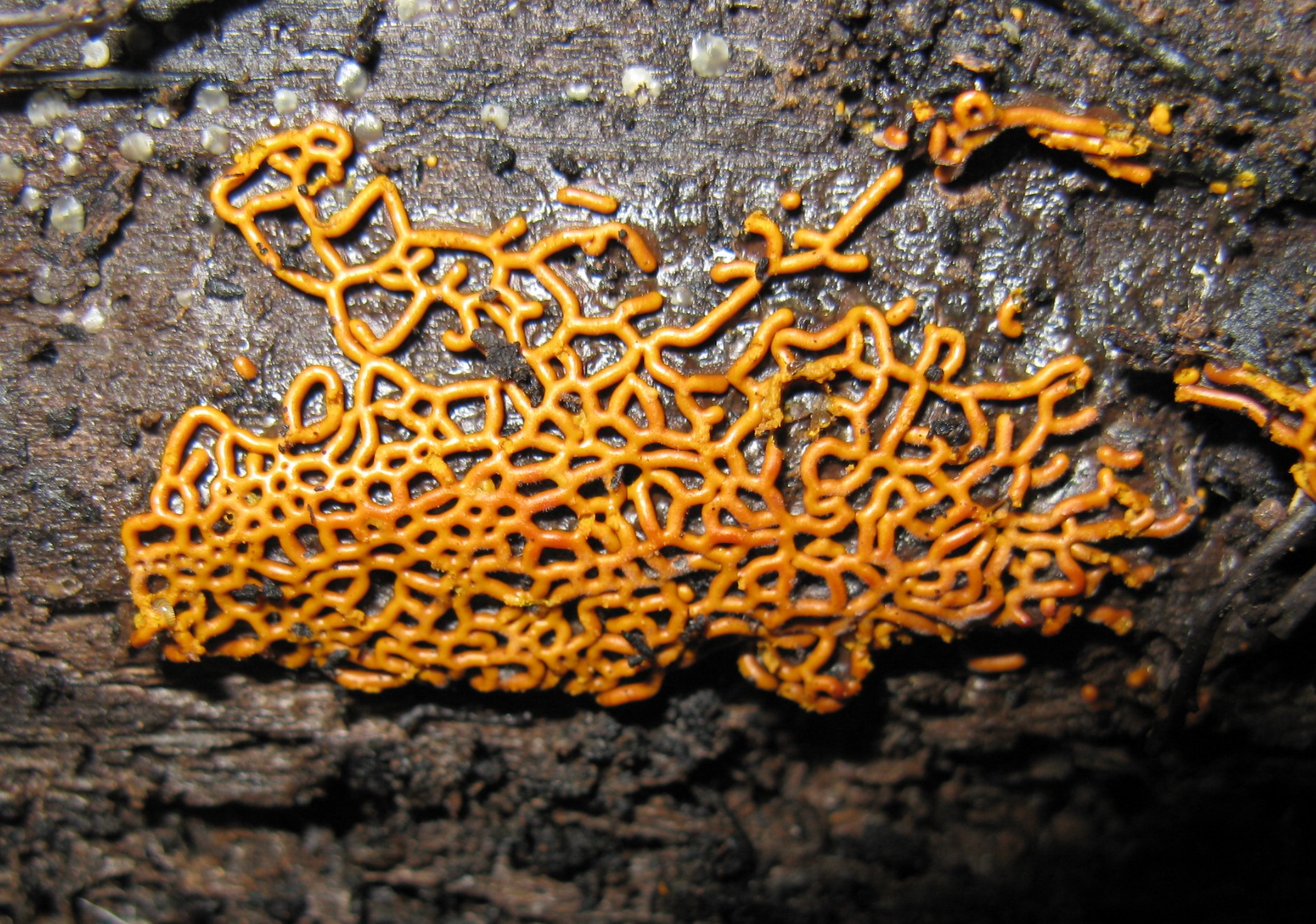Plasmodium (life Cycle) on:
[Wikipedia]
[Google]
[Amazon]
 A plasmodium is a living structure of
A plasmodium is a living structure of
Aggregative Multicellularity Evolved Independently in the Eukaryotic Supergroup Rhizaria
''Current Biology'', Volume 22, Issue 12, 1123-1127.
 A plasmodium is a living structure of
A plasmodium is a living structure of cytoplasm
The cytoplasm describes all the material within a eukaryotic or prokaryotic cell, enclosed by the cell membrane, including the organelles and excluding the nucleus in eukaryotic cells. The material inside the nucleus of a eukaryotic cell a ...
that contains many nuclei, rather than being divided into individual cells each with a single nucleus.
Plasmodia are best known from slime mold
Slime mold or slime mould is an informal name given to a polyphyletic assemblage of unrelated eukaryotic organisms in the Stramenopiles, Rhizaria, Discoba, Amoebozoa and Holomycota clades. Most are near-microscopic; those in the Myxogastria ...
s, but are also found in parasitic Myxosporea, and some algae such as the Chlorarachniophyta.
Structure
A plasmodium is anamoeboid
An amoeba (; less commonly spelled ameba or amœba; : amoebas (less commonly, amebas) or amoebae (amebae) ), often called an amoeboid, is a type of cell or unicellular organism with the ability to alter its shape, primarily by extending and r ...
, multinucleate
Multinucleate cells (also known as multinucleated cells or polynuclear cells) are eukaryotic cells that have more than one nucleus, i.e., multiple nuclei share one common cytoplasm. Mitosis in multinucleate cells can occur either in a coordinate ...
, and naked mass of cytoplasm
The cytoplasm describes all the material within a eukaryotic or prokaryotic cell, enclosed by the cell membrane, including the organelles and excluding the nucleus in eukaryotic cells. The material inside the nucleus of a eukaryotic cell a ...
that contains many diploid
Ploidy () is the number of complete sets of chromosomes in a cell, and hence the number of possible alleles for autosomal and pseudoautosomal genes. Here ''sets of chromosomes'' refers to the number of maternal and paternal chromosome copies, ...
nuclei. The resulting structure, a coenocyte, is created by many nuclear divisions without the process of cytokinesis
Cytokinesis () is the part of the cell division process and part of mitosis during which the cytoplasm of a single eukaryotic cell divides into two daughter cells. Cytoplasmic division begins during or after the late stages of nuclear division ...
, which in other organisms pulls newlydivided cells apart. In some cases, the resulting structure is a syncytium
A syncytium (; : syncytia; from Greek: σύν ''syn'' "together" and κύτος ''kytos'' "box, i.e. cell") or symplasm is a multinucleate cell that can result from multiple cell fusions of uninuclear cells (i.e., cells with a single nucleus), i ...
, created by the fusion of cells after division. Under suitable conditions, a plasmodium may differentiate and form fruiting bodies bearing spores at their tips.
Taxonomic distribution
The term plasmodium, introduced by Leon Cienkowski, usually refers to the feeding stage ofslime mold
Slime mold or slime mould is an informal name given to a polyphyletic assemblage of unrelated eukaryotic organisms in the Stramenopiles, Rhizaria, Discoba, Amoebozoa and Holomycota clades. Most are near-microscopic; those in the Myxogastria ...
s; these are macroscopic mycetozoa
Mycetozoa is a polyphyletic grouping of slime molds. It was originally thought to be a monophyletic clade, but in 2010 it was discovered that protostelia are a polyphyletic group within Conosa.
Classification
It can be divided into dictyoste ...
ns.
The multinucleate developmental stages of some intracellular parasites, namely Microsporidia
Microsporidia are a group of spore-forming unicellular parasites. These spores contain an extrusion apparatus that has a coiled polar tube ending in an anchoring disc at the apical part of the spore.Franzen, C. (2005). How do Microsporidia inva ...
(now in Fungi
A fungus (: fungi , , , or ; or funguses) is any member of the group of eukaryotic organisms that includes microorganisms such as yeasts and mold (fungus), molds, as well as the more familiar mushrooms. These organisms are classified as one ...
) and Myxosporidia (now in Cnidaria
Cnidaria ( ) is a phylum under kingdom Animalia containing over 11,000 species of aquatic invertebrates found both in fresh water, freshwater and marine environments (predominantly the latter), including jellyfish, hydroid (zoology), hydroids, ...
), former cnidosporans, are also sometimes called plasmodia.Hoek, C. van den, Mann, D.G. and Jahns, H.M. (1995). Algae An Introduction to Phycology. Cambridge University Press, Cambridge. .
Similarly, in Rhizaria
The Rhizaria are a diverse and species-rich clade of mostly unicellular eukaryotes. Except for the Chlorarachniophytes and three species in the genus '' Paulinella'' in the phylum Cercozoa, they are all non-photosynthetic, but many Foraminifera ...
, the amoeboid, multinucleate protoplast
Protoplast (), is a biology, biological term coined by Johannes von Hanstein, Hanstein in 1880 to refer to the entire cell, excluding the cell wall. Protoplasts can be generated by stripping the cell wall from plant, bacterium, bacterial, or f ...
s of some Cercozoa
Cercozoa (now synonymised with Filosa) is a phylum of diverse single-celled eukaryotes. They lack shared morphological characteristics at the microscopic level, and are instead united by phylogeny, molecular phylogenies of rRNA and actin or Ubiqu ...
n algae, e.g. Chlorarachniophyta, are called plasmodia. These lack cell walls; the syncytia
A syncytium (; : syncytia; from Greek: σύν ''syn'' "together" and κύτος ''kytos'' "box, i.e. cell") or symplasm is a multinucleate cell that can result from multiple cell fusions of uninuclear cells (i.e., cells with a single nucleus), ...
are created by cell fusion. Some plasmodiophorids and haplosporidians are other multinucleated rhizarians.Brown MW, Kolisko M, Silberman JD, Roger AJ. (2012)Aggregative Multicellularity Evolved Independently in the Eukaryotic Supergroup Rhizaria
''Current Biology'', Volume 22, Issue 12, 1123-1127.
References
{{Authority control SAR supergroup biology